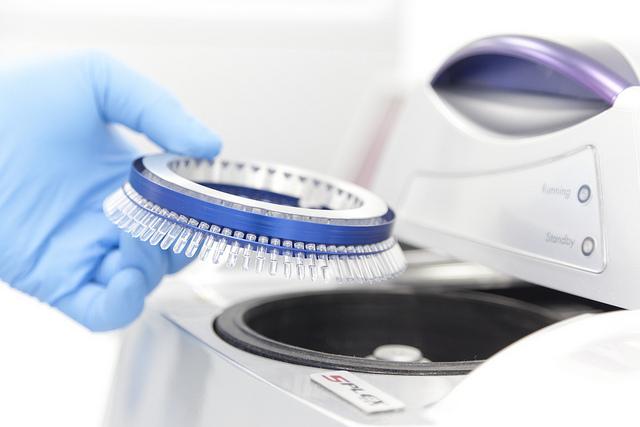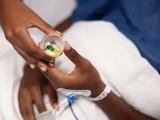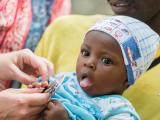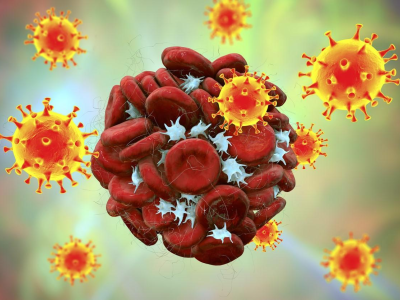Before antibiotic resistance began to emerge as a significant public health issue in the United States, hospital-based laboratories bore the bulk of the responsibility for detecting resistant pathogens that could threaten the health of hospital patients and potentially cause outbreaks. Hospitals were the focus of the battle against antibiotic resistance.
But now it's become evident that resistant bugs can easily spread beyond the walls of a single healthcare facility or hospital network, that the pathogens and mechanisms of resistance are more numerous than previously thought and far trickier to contain, and that a more complete picture of antibiotic resistance trends is needed. Thus, public health laboratories are playing a more significant role in the battle.
Last summer, as part of an effort to close the gap between hospital testing capabilities and the data needed to fight antibiotic resistance, the Centers for Disease Control and Prevention (CDC) announced it was committing $67 million to public health departments across the country to enhance their testing capacity. That money will fund the Antibiotic Resistance Lab Network, a web of state and regional labs that can detect and identify emerging drug-resistant threats, conduct special threat assessments, and track national and regional resistance trends. Up until the past few years, much of this burden fell on the CDC.
Experts hope these added layers of lab and testing capacity will help prevent outbreaks and provide the data needed to provide a more complete picture of antibiotic resistance in the United States and ultimately help public health officials get ahead of the problem.
"It's pretty well-known that antibiotic resistance is a major public health problem," says Kelly Wroblewski, MPH, director of infectious disease programs for the Association of Public Health Laboratories (APHL). "But until now we haven't had a real coordinated public health response, particularly on the collection of lab data, and this network provides that."
Cutting-edge testing
Sara Vetter, PhD, laboratory manager at the Minnesota Department of Health (MDH) Public Health Laboratory—one of the seven regional labs named by the CDC—says the idea for a network of antibiotic resistance labs came from the National Action Plan for Combating Antibiotic Resistant Bacteria, issued by the White House in 2015.
"Laboratory capacity is mentioned again and again in that report," Vetter says. "It emphasized the need for laboratory capacity to understand these bugs, to get them in[to the lab] and to learn about them."
Vetter and her colleague, microbiologist Paula Snippes, MT, explain that while hospital-based labs are fairly robust and are capable of doing antibiotic susceptibility testing and characterizing many of the drug-resistant organisms known to healthcare facilities, emerging multidrug-resistant "superbugs," like carbapenem-resistant Enterobacteriaceae (CRE) and bacteria harboring the colistin-resistance gene MCR-1, present more of a challenge, especially in smaller hospitals that don't see these type of organisms very often.
Identifying these pathogens and figuring out how capable they are of spreading requires the type of cutting edge molecular tests—such as polymerase chain reaction and whole-genome sequencing—that can find the genetic mechanisms responsible for resistance.
"Every single day they're doing susceptibility testing for normal organisms," Snippes says of the hospital labs. "But what we find is that when there are really resistant bugs emerging…they probably can detect them but not characterize them very well."
That's where the state health department labs will step in, taking CRE samples from clinical labs, for example, and testing them to see if they produce carbapenemase enzymes. Once that determination is made, they can further test to see what type of carbapenemase gene is causing the resistance. If the state labs don't have that capability, they'll send the samples on to the regional labs.
This additional testing capacity will help hospitals and health officials better understand what kind of drug-resistant threat they're dealing with and what kind of outbreak precautions are needed. And unlike traditional culture testing, the tests can provide quick answers.
"The key to this is rapid turnaround time," says Snippes. "This is really something different, where public health isn't just doing surveillance, they're actually impacting the transmission of this bug."
Focusing on the bigger picture
Furthermore, adds Vetter, while the focus for hospital labs is to figure out what antibiotics the organisms are resistant to so physicians can figure out how to treat their patient, regional labs, in addition to providing outbreak consultation, will be able to focus on the bigger picture—what's making the organisms resistant, and where else these organisms and resistance mechanisms are showing up.
"At the clinic level, they're trying to treat the patient, while we're doing tracking on the population," Vetter says. "We want to see, in a geographic sense, where these bugs are, where they are spreading, and where they are emerging."
That's crucial, Wroblewski explains, because older, infection-prone patients are often moving between hospitals and long-term care facilities and bringing antibiotic-resistant infections with them. "Unless you have somebody in a community looking at this at a broader level, you might miss early signs of multi-facility spread of a particular pathogen."
In addition to providing outbreak support for hospitals and testing support for clinical labs and state health departments, the regional labs will be tracking changes in resistance for hard-to-treat pathogens such as CRE, carbapenem-resistant Pseudomonas aeruginosa, multidrug-resistant Streptococcus pneumoniae, and Neisseria gonorrhea. That work will include CRE colonization testing, which could provide hospitals and healthcare facilities with a much clearer picture of how widespread the multidrug-resistance pathogen is and inform infection control practices.
The MDH Public Health Lab is also one of four labs in the country tracking resistance in the fungus Candida. Candida auris, a multidrug-resistant yeast that can cause fatal invasive infections, has recently emerged as a health threat in US hospitals and is being carefully watched by the CDC. MDH will be responsible for monitoring drug-resistant Candida infections in Minnesota and the eight other states in its region.
"This is a rare capacity to have," Vetter says. "No other state in our region has any Candida susceptibility capacity, so they'll just send samples right to us."
Another job of the regional labs will be to collect samples of resistant organisms from clinical labs to send to the CDC for its Antimicrobial Resistance Isolate Bank, a national repository of panels of resistant bacteria that researchers and pharmaceutical companies can use to test diagnostic devices and new antibiotics.
At the top of this hierarchy of labs is the CDC, which will ultimately take all the information gathered from the clinical, state, and regional labs and use it to identify nationwide trends in resistance and report those findings. CDC labs will also conduct testing on unusual isolates that can't be characterized by state and regional labs.
Getting ahead of the problem
Right now, with less than a year under their belt, the regional labs are doing outreach and training with clinical and state health labs, in coordination with the APHL. But once the network is up and running, Vetter and Snippes say, it will significant enhance surveillance capability.
"There's so much emphasis now on finding these bugs, there's no way the CDC could do this alone," Vetter says. "With this regional lab network, you can get that much more expertise and knowledge."
And maybe even help public health officials from constantly having to playing catch-up with antibiotic resistance.
"You can't solve a problem until you define it fully," Wroblewski says. "This will at least help fully define the problem, and help us detect emerging issues sooner, so that public health can get out ahead a little bit more than it's able to now."
See also:
CDC Antibiotic Resistance Lab Network
Jul 29, 2016, CIDRAP News story "CDC allocates $67 million to battle antibiotic resistance"























